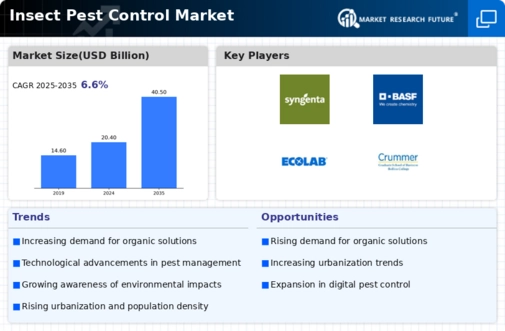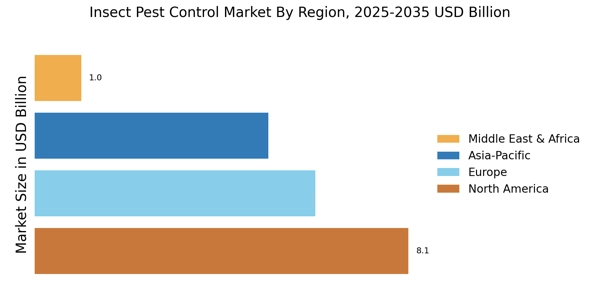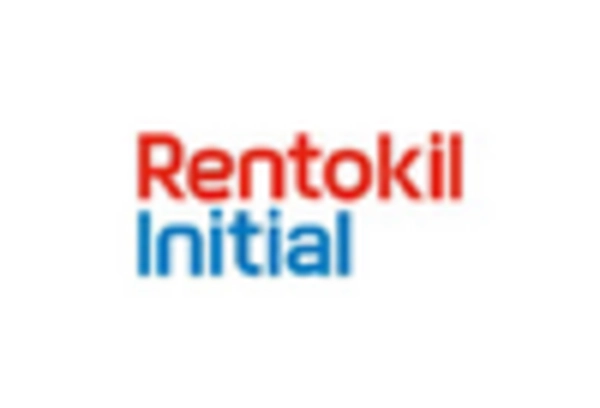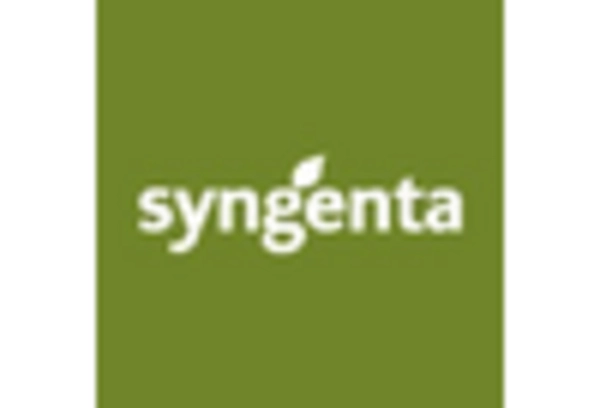Rising Urbanization
The rapid pace of urbanization appears to be a significant driver for the Insect Pest Control Market. As more individuals migrate to urban areas, the density of human populations increases, leading to a higher likelihood of pest infestations. Urban environments, with their unique infrastructure and waste management challenges, create ideal conditions for pests such as rodents and insects. According to recent data, urban areas are experiencing a surge in pest-related complaints, which has prompted municipalities to invest more in pest control services. This trend suggests that the demand for effective pest management solutions will continue to rise, thereby bolstering the Insect Pest Control Market. Furthermore, the increasing awareness of health risks associated with pests is likely to drive consumers towards professional pest control services.
Environmental Regulations
Environmental regulations are becoming a crucial driver for the Insect Pest Control Market. Governments worldwide are implementing stricter regulations regarding the use of chemical pesticides, pushing companies to adopt more environmentally friendly practices. This shift is prompting the development of biopesticides and other sustainable pest control solutions that align with regulatory requirements. Market analysis indicates that the demand for eco-friendly pest control options is growing, as consumers become more environmentally conscious. Consequently, pest control companies are adapting their strategies to comply with these regulations while meeting consumer expectations. This trend suggests that the Insect Pest Control Market will continue to evolve, focusing on sustainable practices that minimize environmental impact.
Health and Safety Concerns
Health and safety concerns are increasingly influencing the Insect Pest Control Market. The presence of pests is often linked to various health risks, including the transmission of diseases such as Zika virus, West Nile virus, and Lyme disease. As public awareness of these health threats grows, there is a corresponding increase in demand for pest control services. Data indicates that households and businesses are prioritizing pest management to safeguard their environments. This heightened focus on health and safety is likely to propel the growth of the Insect Pest Control Market, as consumers seek reliable solutions to mitigate pest-related risks. Additionally, regulatory bodies are imposing stricter guidelines on pest control practices, further emphasizing the need for effective pest management solutions.
Technological Advancements
Technological advancements are playing a pivotal role in shaping the Insect Pest Control Market. Innovations such as smart traps, drones for monitoring pest populations, and the use of artificial intelligence for predictive analytics are revolutionizing pest management strategies. These technologies not only enhance the efficiency of pest control measures but also reduce the environmental impact associated with traditional methods. Market data suggests that the adoption of these advanced technologies is on the rise, as pest control companies seek to improve service delivery and customer satisfaction. The integration of technology into pest management practices is likely to drive growth in the Insect Pest Control Market, as consumers increasingly demand more effective and sustainable solutions.
Increased Agricultural Activities
Increased agricultural activities are significantly impacting the Insect Pest Control Market. As the global population continues to grow, the demand for food production is rising, leading to intensified agricultural practices. This increase in farming activities often results in higher pest populations, necessitating effective pest control measures to protect crops. Data indicates that the agricultural sector is one of the largest consumers of pest control products, as farmers seek to safeguard their yields from pest damage. The growing emphasis on food security and sustainable farming practices is likely to drive innovation in pest management solutions, further propelling the Insect Pest Control Market. As agricultural stakeholders prioritize pest control, the market is expected to witness substantial growth in the coming years.


















Leave a Comment